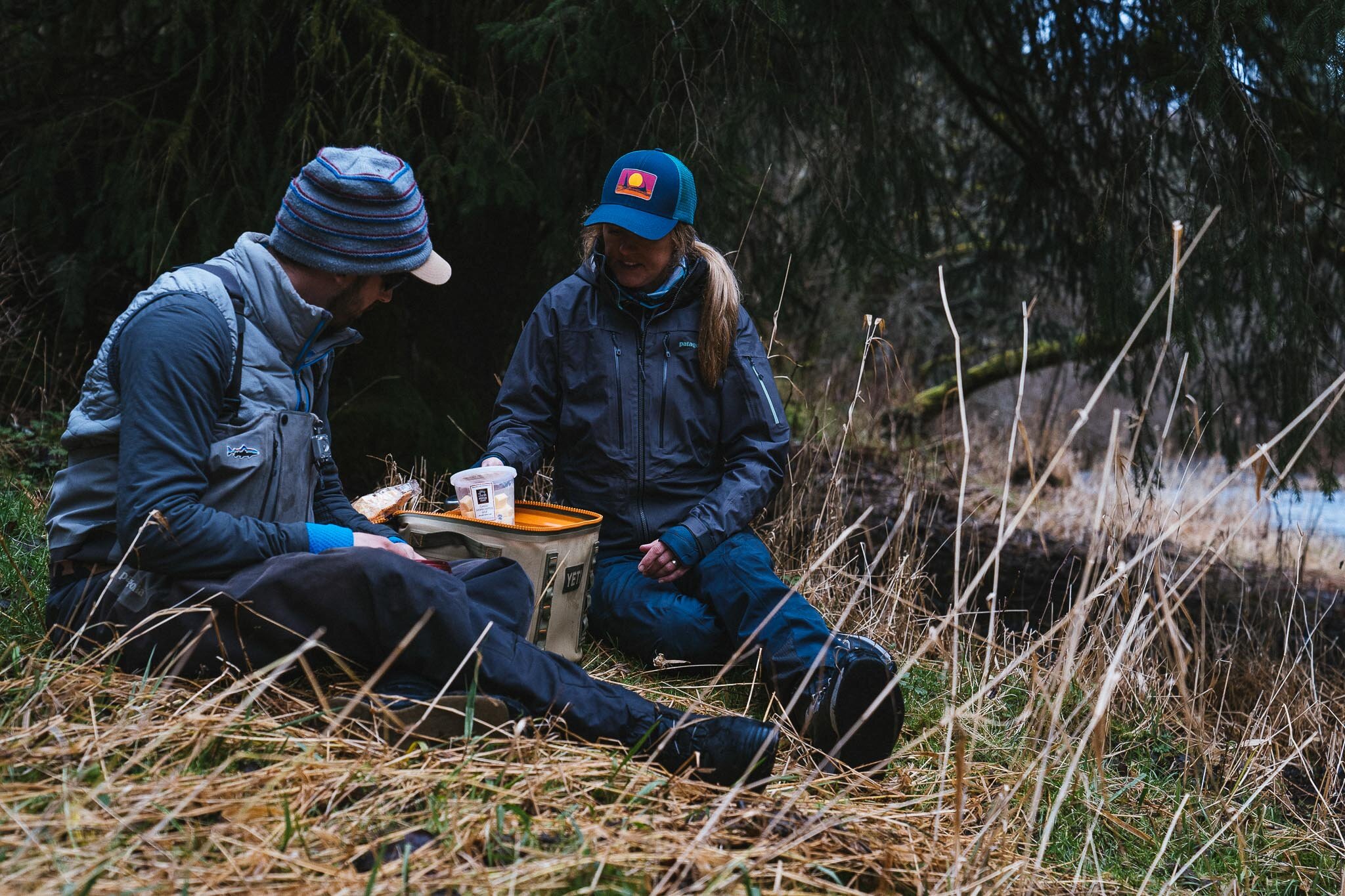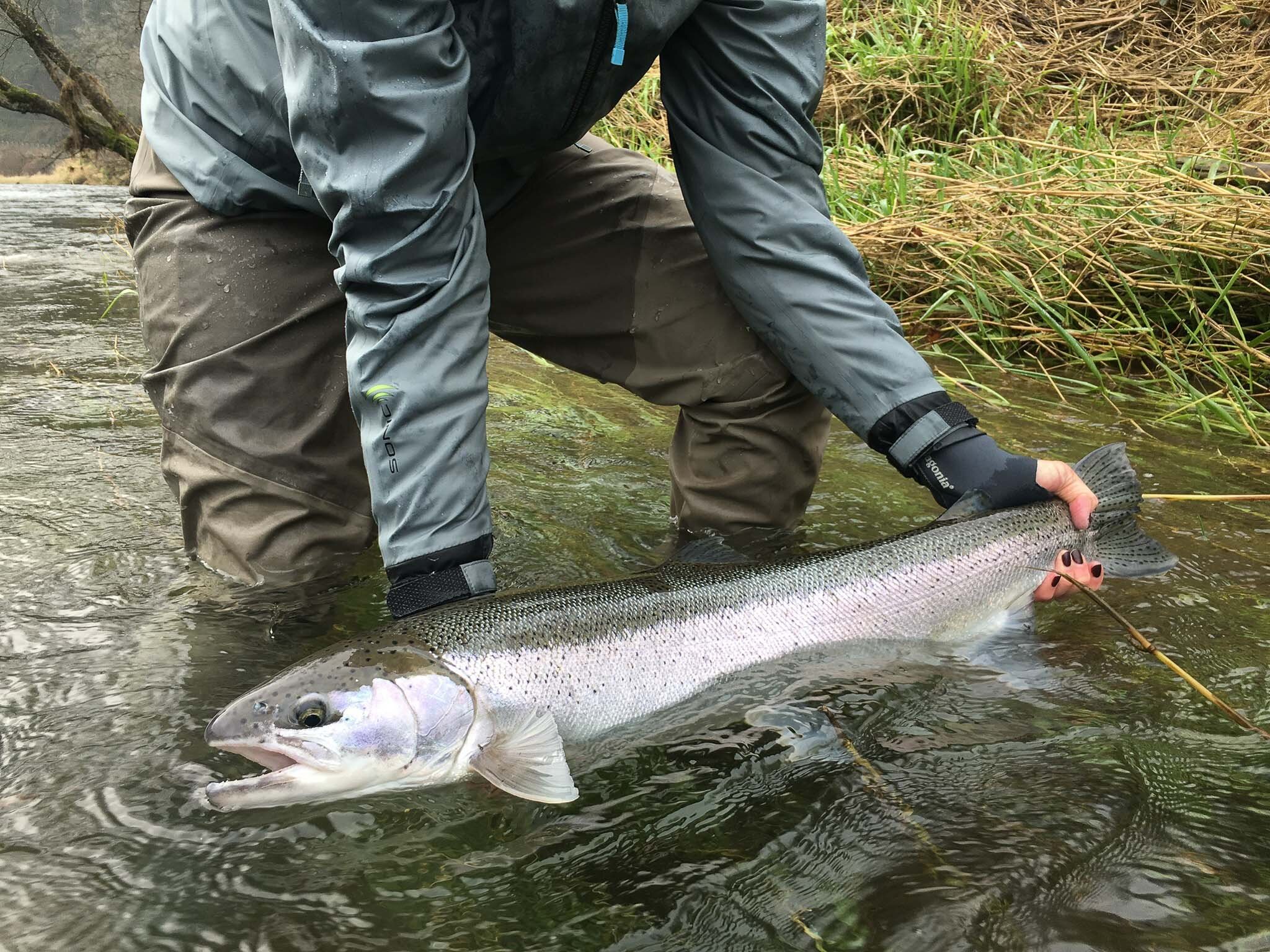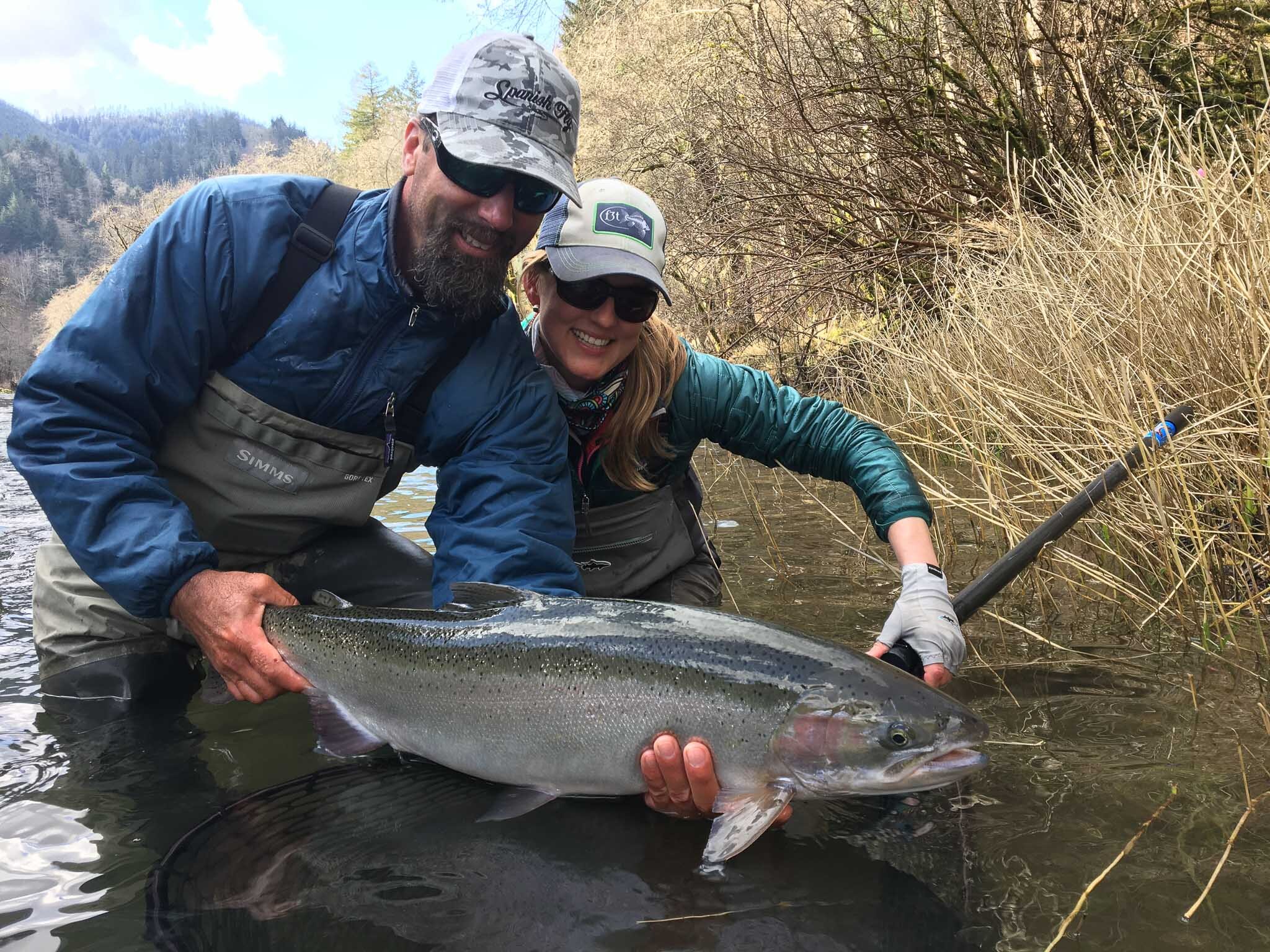
THE STEELHEAD JOURNEY
Our Oregon Coast winter steelhead average eight to ten pounds, with fish over fifteen pounds caught every season. We have accumulated many years of experience guiding these local rivers. Our deep love for the fishing, the fishery, and sharing our backyard with you is what makes this experience truly special for all of us. For more information on the full steelhead journey please see below the photos.
For details on planning your steelhead fishing trip, visit our Lodging & Accommodations Page















Beginning in the middle of November, small groups of steelhead start their journey from the Pacific Ocean back to the streams from which they were born. As the winter progresses, larger and larger groups file into the systems in preparation to spawn. This migration lasts until the end of April, with the bulk of the wild steelhead run entering fresh water during January, February and March. It is during this time that we chase these fish in earnest.
The North Coast’s steelhead streams are short and high gradient, originating deep within the coastal range. Upper stretches within these watersheds are riddled with canyons, waterfalls and whitewater. We spend our time fishing the transition zones between the high gradient upper rivers and the coastal flat lands of the lower rivers. Much of the water we fish isn’t what folks would call classic steelhead fly water. Our rivers often run bank to bank, with very little exposed shoreline or gravel bars. Wading can be tricky trying to maneuver through boulders as well as bedrock and overhanging branches can get in the way of even the most skilled caster. But the fish are there, and our job is to figure out a way to get your fly to the fish. The nice thing about having not-so-classic fly water is we can often pin-point where fish will be lying within a run and select only the best spots to fish.
Most fishing days will consist of doing a float in either a drift boat or self-bailing raft with a fishing frame. Float distances range from two to upwards of ten miles. We may do multiple floats on a river, or jump to another river in the area halfway through the day. Occasionally, we will hike a small section of river in the morning and then float in the afternoon—this will all depend on the river conditions as well as the interest of the guest. While floating, we will typically fish from the boat with strike indicators in-between each carefully selected swing runs, where we will get out and swing flies from shore or from the boat.
Swinging flies for steelhead is one of the most challenging things a fly angler can do, so it is important to understand success will be measured in grabs. On the North Coast, we hope for a grab or two a day and a fish or two to hand each week on the swung fly and a fish or two a day on a dead drifted fly. The reward to the challenge though are these fish: often chrome bright, and fresh from the salt.
